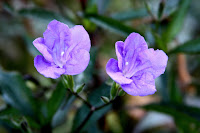Duck Eggs Daily: Raising Happy Healthy Ducks ... Naturally

This book, Duck Eggs Daily : Raising Happy Healthy Ducks, is a fun read even though we can't possibly raise ducks here. Lisa Steele's first book, Fresh Eggs Daily, gave readers an equally informative view of raising chickens. The duck book though, is one of a kind. Steele's YouTube channel has 43 cute, cuter, cutest video clips of their feathered friends. Ducks are a different breed of bird, and, while Steele assumed that they could be raised together, she found that they were better if given their own individual space. Most notably because ducks play in the chickens' water dishes! Chapter Four: "A day in a life with ducks" explains the ducks' need for routine and how to be sure they are comfortable if you have to be away from home. Facebook Duck Eggs Daily What fascinated me is their nutritional needs. In addition to feed, ducks should get grit, egg shells, oats, probiotic powder, seaweed/kelp, brewers' yeast, garlic, dried herbs (fennel








